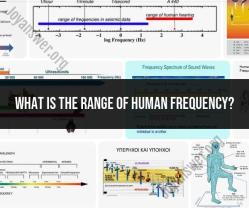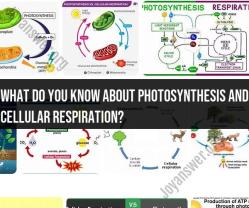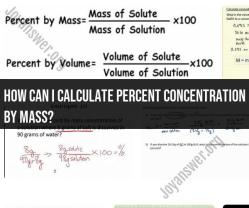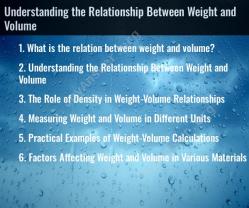What is meant by Hollow Earth theory?
The Hollow Earth theory is a speculative hypothesis that suggests the Earth is not a solid sphere but instead has a hollow interior with various sub-theories proposing the existence of a central sun and ecosystems within. It's important to note that this theory is not supported by scientific evidence and is considered pseudoscience.
Here are the key components of the Hollow Earth theory:
Hollow Cavity:
- According to the theory, the Earth's interior is not a solid mass but rather a vast, hollow cavity. This hollow space is often depicted as being large enough to contain entire ecosystems.
Central Sun:
- Many versions of the Hollow Earth theory propose the existence of a small, luminous sun at the center of the Earth. This central sun is suggested to provide light and heat to the inner world.
Ecosystem within Earth:
- Proponents of the theory often suggest that the interior of the Earth is not only hollow but also contains landscapes, oceans, and living organisms. Some versions even go as far as proposing the existence of advanced civilizations within this inner world.
Polar Openings:
- Some variations of the Hollow Earth theory claim that openings or entrances to the hollow interior exist at the Earth's poles. These openings are sometimes depicted as large holes or passageways.
Historical References:
- Advocates for the Hollow Earth theory sometimes point to historical accounts, ancient myths, and legends as evidence supporting the concept. However, these references are often interpreted in ways that mainstream scholars do not endorse.
Exploration Claims:
- Some proponents claim that explorers, particularly those on polar expeditions, have encountered evidence supporting the theory. However, these claims are generally based on misinterpretations or exaggerations of historical accounts.
The Hollow Earth theory has been promoted by various individuals over the centuries, and it has appeared in literature, science fiction, and popular culture. Notably, the theory gained attention during the 19th and early 20th centuries, with some writers and adventurers speculating about hidden worlds beneath the Earth's surface.
From a scientific perspective, the Hollow Earth theory contradicts well-established principles of geophysics, seismology, and planetary science. Modern scientific understanding of the Earth's interior is based on a solid and layered structure, including a solid inner core and a molten outer core.
While the Hollow Earth theory remains a topic of fascination for some, it is important to distinguish between imaginative speculations and scientific knowledge. The overwhelming consensus within the scientific community is that the Earth is a solid, layered sphere with no evidence supporting the existence of a hollow interior.
The origins and history of the Hollow Earth theory: Tracing the development of the concept over time
The Hollow Earth theory, also known as the Concave Earth theory, has a long and intriguing history, with its roots dating back to ancient civilizations. While the exact origins of the theory are unclear, it has been proposed and debated for centuries, capturing the imagination of scientists, philosophers, and writers alike.
Ancient Writings: The concept of a hollow Earth appears in various ancient writings and myths from different cultures around the world. In Hindu mythology, the Earth is described as a hollow sphere with seven inner worlds. Similarly, Tibetan Buddhist texts mention a subterranean kingdom called Agartha, located within the Earth's interior.
Scientific Exploration: In the 17th century, the Hollow Earth theory gained traction among scientists and explorers. Edmond Halley, the English astronomer who predicted the return of Halley's Comet, proposed that the Earth was a hollow sphere with an inner sun. He believed that the polar regions were vast openings leading to the Earth's interior.
Literary Influences: The concept of a hollow Earth has also been explored in literature, influencing the works of authors like Edgar Allan Poe, Jules Verne, and Olaf Stapledon. These writers used the idea of a hollow Earth as a setting for their fantastical stories and explorations of inner worlds.
Exploring the proposed structure of the Hollow Earth: Examining the hypothetical features and characteristics
Proponents of the Hollow Earth theory envision a unique structure for our planet, distinct from the solid sphere model accepted by modern science. Their proposed model includes:
Shell-like Structure: The Earth is described as a hollow shell, with a thickness ranging from several hundred miles to thousands of miles. This shell is believed to be composed of various rock layers and minerals.
Inner Sun: At the center of the hollow Earth lies a central sun, a source of light and warmth for the habitable inner surface. This inner sun is often described as smaller and less intense than our Sun.
Inner Surface: The inner surface of the Earth is believed to be habitable, with landmasses, oceans, and possibly even life forms. Some proponents suggest that this inner world could have its own ecosystems, climates, and civilizations.
Analyzing evidence for and against the Hollow Earth theory: Assessing scientific arguments and observations
The Hollow Earth theory has been extensively debated and scrutinized by scientists throughout history. While there are some intriguing pieces of anecdotal evidence and proposed explanations, the theory lacks any solid scientific backing.
- Arguments Against:
Geophysical Evidence: Seismic data and measurements of the Earth's gravity strongly suggest that the Earth is a solid sphere, not a hollow shell.
Lack of Observational Evidence: There is no direct observational evidence to support the existence of an inner sun or openings at the poles.
Inconsistent Explanations: The proposed explanations for the Hollow Earth theory often contradict established scientific principles and fail to provide a cohesive framework.
- Arguments for:
Unexplained Phenomena: Proponents point to unexplained phenomena, such as the Aurora Borealis and the Earth's magnetic field, as potential evidence for an inner sun.
Ancient Writings and Myths: The widespread presence of the Hollow Earth concept in ancient cultures is considered a suggestive point.
Personal Accounts: Some individuals have claimed to have had experiences that support the theory, such as seeing polar openings or hearing sounds from the inner Earth.
While the Hollow Earth theory remains a fascinating and imaginative concept, it is important to recognize that it lacks scientific validation. The overwhelming evidence from various scientific disciplines supports the solid sphere model of the Earth. However, the theory continues to intrigue and inspire, reminding us of the mysteries that still surround our planet and the vastness of the universe.












